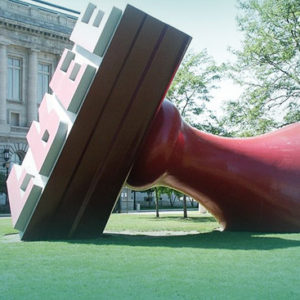Rubber Stamps

There are four major processes for producing rubber stamps. In the original process, the type is set in a bed of paper-mache that is then heated to form an accurate negative. This negative is filled with uncured rubber. Heat and pressure are applied to vulcanize the rubber to a strong elastomeric sheet of stamps.
Currently, the most popular technique is to use liquid photopolymers. Typically, an A4 size negative is filled with text (or graphics) from as many stamps that will fit. This is used with UV light to illuminate the front of a planar cavity filled with a liquid photopolymer while the entire back is illuminated. Where exposed, the liquid polymer turns into a strong elastomeric rubber leaving a solid back and a front with solid text. The unexposed liquid photopolymer between the text is washed away with an aqueous solution.
About a decade ago, a method that uses a medium power carbon-dioxide laser engraver was introduced. Under computer control, a relatively large sheet of rubber (approximately 100 square inches) is engraved with the information for as many stamps as will fit. Adoption of this method has been retarded by the high price of the engraving apparatus and time required for engraving one sheet which ranges from 30 minutes to 2 hours, depending on the text.
In the new so-called “flash stamp” technology, the stamping layer is made from a microporous polymer which is selectively sealed thermally using a powerful heat generating flash lamp and a transparent positive. The sealed layer is backed by a pre-inked layer which supplies ink and is capable of pressing the sealed layer uniformly.
The multi-billion dollar rubber stamp business was once dominated by large companies. However availability of liquid rubber stamp resin and desk-top rubber stamp making machines has resulted in tens of thousands of small rubber stamp producers coming to the market throughout the world. Liquid photopolymers used in making stamps are typically urethane methacrylates which generally cure to 40 to 50 Shore A hardness. Harder liquid or sheet photopolymer plate are also used as molding or pattern plates to make conventional rubber plates or stamps. Suppliers of photopolymer materials include those shown here.
Copyright © 2007-2008 Savla Associates

